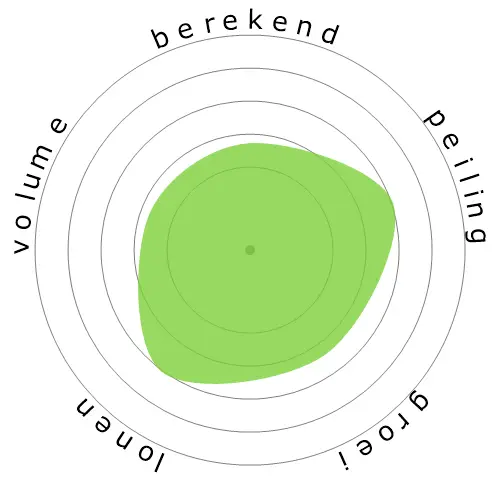Chemici




Mensen bekeken ook
Berekend automatiseringsrisico
Gemiddeld Risico (41-60%): Beroepen met een gemiddeld risico op automatisering omvatten meestal routinetaken, maar vereisen nog steeds enige menselijke beoordeling en interactie.
Meer informatie over wat deze score is en hoe deze wordt berekend, is beschikbaar hier.
Gebruikerspeiling
Onze bezoekers hebben gestemd dat er een kleine kans is dat dit beroep zal worden geautomatiseerd. Deze beoordeling wordt verder ondersteund door het berekende automatiseringsrisiconiveau, dat een schatting geeft van 46% kans op automatisering.
Wat denk je dat het risico van automatisering is?
Wat is de kans dat Chemici binnen de komende 20 jaar vervangen zal worden door robots of kunstmatige intelligentie?
Gevoel
De volgende grafiek wordt opgenomen waar er een aanzienlijke hoeveelheid stemmen is om zinvolle gegevens weer te geven. Deze visuele weergaven tonen de resultaten van gebruikerspeilingen in de loop van de tijd en bieden een belangrijke indicatie van sentimenttrends.
Gevoel over tijd (jaarlijks)
Groei
Het aantal 'Chemists' vacatures zal naar verwachting stijgen met 7,6% tegen 2033
Totale werkgelegenheid en geschatte vacatures
Bijgewerkte prognoses zijn verschuldigd 09-2025.
Lonen
In 2023 was het mediane jaarloon voor 'Chemists' $ 84.680, of $ 40 per uur
'Chemists' werden 76,2% hoger betaald dan het nationale mediane loon, dat op $ 48.060 stond.
Lonen in de loop van de tijd
Volume
Vanaf 2023 waren er 83.530 mensen in dienst als 'Chemists' binnen de Verenigde Staten.
Dit vertegenwoordigt ongeveer 0,06% van de werkende bevolking in het hele land.
Anders gezegd, ongeveer 1 op de 1 duizend mensen is werkzaam als 'Chemists'.
Functieomschrijving
Voer kwalitatieve en kwantitatieve chemische analyses of experimenten uit in laboratoria voor kwaliteits- of procescontrole of om nieuwe producten of kennis te ontwikkelen.
SOC Code: 19-2031.00


Opmerkingen
Leave a comment
There are autotitrators and autosamplers for many different equipment (Dissolution systems, HPLC, GC, UPLC, Mass spec and so on). These technologies have been around for decades yet analysts are still required to prepare samples, analyze them and then interpret and report data .
The two tenants which make a job susceptible to replacent by automation are Predictability and complexity. Some chemical analysis (more specifically wet chemistry, non-instrumental techniques) is more complex than what current automation systems can handle (i.e. chemical digestion of a sample, followed by extraction with a solvent, evaporation of the solvent) also sample quality is unpredictable (hence why QC labs exist, if every manufacturing method was flawless there would be no need for QC/QA).
Aspects of Inorganic Chemistry, Physical Organic Chemistry, and Polymers (as a part of Organic Chemistry) are very relevant to developing new materials with desirable properties. In fact, the Bureau of Labor Statistics (BLS) in the U.S.A. categorizes Chemists and Material Scientists as one and the same profile.
Job opportunities for Material Scientists do allow Chemists to be considered as Material Scientists when the Chemist has experience and multiple credits in Physical Chemistry, Polymers, and/or Inorganic Chemistry. Many Chemists follow this professional direction. In fact, some departments are even named 'Materials Chemistry'.
This fact indicates that one of these professions has an incorrect percentage representation on this website. Either Materials Science should have 51% (or a percentage much closer to Chemistry) on this website, or Chemistry should have 22% (similar to Materials Science). The large discrepancy simply reflects a mistaken view on the nature of their work.
Chemistry, by default, incorporates aspects of Physical Chemistry applicable to materials. It is suggested to reassess the activities of chemists to correct the percentage that has been flawed in a previous assessment.
Laat een reactie achter over dit beroep